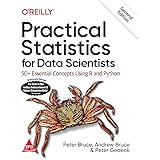Exponential Smoothing Forecast in Time Series
Exponential Smoothing Forecast in Time Series, A forecasting technique for univariate time series data is exponential smoothing.
With this strategy, forecasts are weighted averages of historical observations, with the weights of older observations decreasing exponentially.

The study can now include model data with trends and seasonal components thanks to various forms of exponential smoothing.
In the 1950s, statisticians first developed exponential smoothing. Since then, it has had enormous success among analysts as a rapid method of producing precise projections in a variety of disciplines, particularly in industry.
Additionally, it is utilized in signal processing to filter high-frequency noise and smooth signals.
Simple, double, and triple (Holt-Winters) exponential smoothing are some of these techniques.
Will also assist you in defining parameter values to enhance your models. We’ll create predictions using practice data sets!.
Boost Your Resume with Machine Learning Portfolio Projects (finnstats.com)
Exponential smoothing advantages
Analysts can alter how quickly older observations lose significance in computations by changing parameter values.
In order to suit the needs of their subject area, analysts can adjust the relative relevance of fresh data to older observations.
In contrast, the moving average method gives data outside the window 0 weight and equally weights all previous observations when they fall within the moving average window.
Exponential smoothing is referred to by statisticians as an ETS model because it models error, trend, and seasonality in time series data, much like the Box-Jenkins ARIMA approach does.
Simple Exponential Smoothing (SES).
For univariate time series data without a trend or seasonal cycle, use simple exponential smoothing. It is also known as single exponential smoothing by analysts.
It is the most basic type of exponential smoothing and a fantastic place to begin!
Only the level component is estimated using simple exponential smoothing. Consider the level component to be the average or normal value.
For each observation, this procedure updates the level component. It only utilizes one weighting parameter, alpha (), because it only models one component.
The amount of smoothing is controlled by this variable by altering how quickly the level component catches up with the most recent data.
The range of possible alpha values is 0 to 1, inclusive. Because they average out changes over time, lower values give greater weight to historical observations and generate smoother-fitted lines.
Best ML Project with Dataset and Source Code » finnstats
Higher values limit the degree of averaging by the earlier data, which results in a more jagged line since they place a higher emphasis on the current data.
Fast response to changing conditions may seem like good quality, but if the smoothing constant for alpha is set too high, the model will react to random fluctuations, which can lead to unpredictable forecasts (noise).
On the other hand, a too-low alpha delays the impact of changing conditions on the forecasts.
With a weight of 1, all previous observations have no bearing on the model, and only the most recent observation is given any weight.
Analysts refer to this type of forecasting as naive forecasting because the forecast values alpha = 1 are therefore just the current value.
Simple exponential smoothing produces a fixed set of values while forecasting. The final level component value is the same for all projections.
Therefore, these predictions are only applicable when your time series data lack trend and seasonality.
If you want to better understand the trend, seasonality, and other patterns in your data, use the autocorrelation and partial autocorrelation functions.
Choosing an Alpha Value
Analysts can choose the value of alpha using their discretion. Typically, you want to smooth the data in order to capture the underlying pattern and lessen the erratic fluctuations (noise).
Highest Paying Data Science Skills-You should know! » finnstats
You don’t want to smooth things out too much because you can miss important details.
However, when selecting alpha, use subject-area expertise and industry standards. Usually, a default value is set to 0.2.
Alternatively, you might use regression methodology and let your statistics program estimate the parameter value from your data while minimizing the sum of squared errors.
You can find the value that perfectly fits your dataset using this technique. Unless your study region, prior studies, or industry uses a predefined smoothing value.
Note: There is no connection between alpha in hypothesis testing and alpha in the context of exponential smoothing.
Upcoming tutorial will discuss examples of simple and double exponential smoothing.




